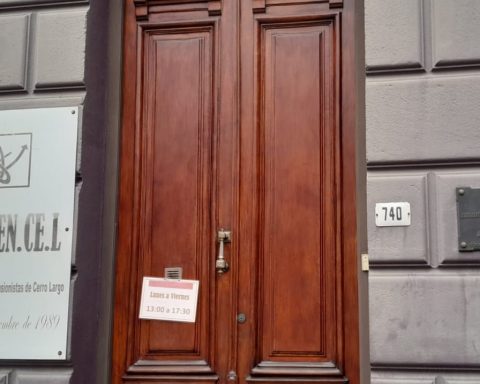The big mac index, published in the last hours, showed that the Uruguayan peso is one of the most overvalued currencies in more than 50 compared. It is the only country in the region -among those included in the measurement- that has at its currency strengthened against the dollar.
The British magazine The Economist updated the Big Mac Index with values up to December 2022. This indicator, which compares the price of the famous hamburger in more than 50 countries, can be taken as a reference to know if a currency is undervalued or overvalued. .
The Big Mac Index suggested that The Uruguayan peso is the second most overvalued currency in the entire measurement. In first place was Switzerland with 35.4%. In the case of Uruguay, the peso is 27.8% overvalued.
The Economist indicated that a Big Mac – alone, without a combo included – costs $268 (US$6.85), while in USA its price is US$ 5.36. Therefore, the hamburger is worth 27.8% more in Uruguay than in the United States, with the highest price in the entire region.
He added that the implicit exchange rate is $50. Therefore, the difference between the last value and the real exchange rate of $39.13 marked that overvaluation. That is, according to the index, the dollar in Uruguay should have a price of $50.
All the other countries in the region included in the list are in a different situation.
The Argentine peso, in the official exchange rate, had a devaluation of 1%. The study found that a Big Mac costs A$980 (US$5.31) and US$5.36 in the United States.
The implicit exchange rate is A$182.84, while the official exchange rate was A$184.7. From there it arises that the Argentine peso has an undervaluation of 1%.
In the case of Brazilthe famous hamburger costs 22.9 real and the implicit exchange rate is 4.27 reais while the official one is at 5.16. For that reason, the index suggests that the real is undervalued by 17.2%.
In turn, in the comparison by Gross Domestic Product (GDP) per capita the difference was greater.

In this case, the Big Mac Index indicated that the dollar should cost $59.75, due to an overvaluation of the Uruguayan peso of 52.7%. In this measurement, Uruguay led the ranking of local currency strengthened against the dollar. Argentina had an overvaluation of 21.2%, Chile with 5.1% and Brazil with 1.1%.
The Big Mac Index was created by The Economist in 1986 as a guide to know if the coins are level aligned. It is based on the theory of Purchasing power parity (PPA). This theory indicates that a currency is aligned with another if it allows buying the same basket of goods at the same value, expressed in any of the two currencies.
“Burgernomics was never intended to be an accurate indicator of currency misalignment, but merely a tool to make exchange rate theory more palatable,” they said from the British outlet.
“However, the Big Mac index has become a global standard, included in several economics textbooks and the subject of dozens of academic studies,” they added.
The partner of Cibils Soto Consultores, Marcos Sotosaid to The Observer that the Big Mac Index is limited and limited to a product, it has features that do not make it perfect and shows some vulnerabilities as an index. “But it is an indicator and one more input for analysis. And in that he clearly speaks of the relative increase in the price of Uruguay ”, he pointed out.
He expressed that the weakening of the dollar at the local level, contrary to what happened in the rest of the world, had several factors. He highlighted that there was “an oversupply of dollars basically linked to the record level of exports and possibly due to some blows from UPM’s investment.”
For this year, he predicted that the US currency would achieve some strengthening at the local level. “The expectation is that the dollar will increase a little in Uruguay, but not even exceed inflation,” he said.
dollar weekly close
In contrast to the Big Mac Index suggestions, the dollar continues to trend lower in Uruguay. This Friday, the US currency ended the week at $38,625 in the interbank average, according to information from the Electronic Stock Market. It was the fourth consecutive decline in the week.
Daily trading was for US$34.900 million, with a minimum price of $38.50 and a maximum of $38.75. The Central Bank (BCU) did not intervene during the day in the exchange market.
On the board of Banco República (BROU) it traded at $37.40 for purchase and $39.90 for sale.
The dollar closed the week with a fall of 1.08%. So far this year, it accumulates a decrease of 3.6%.


















